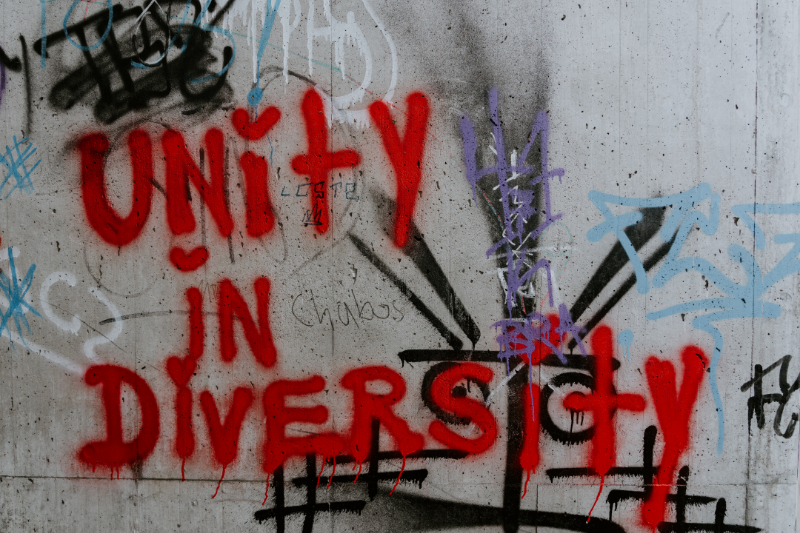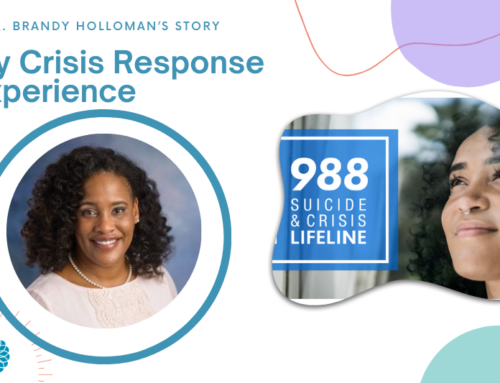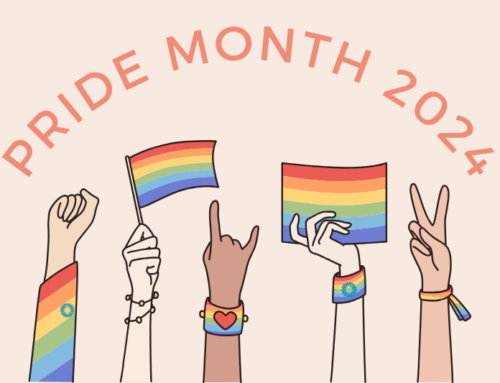This article is by Change Matrix Change Consultant and Racial Equity Trainer Evelyn Clark.
As a former direct services provider, I have witnessed clinical treatment deeply harm BIPOC young people. Much of this stemmed from the ongoing stigma against Black and Brown people in America — especially young Black men. Society has deemed them older than they are and labeled them especially dangerous or aggressive, even though I have seen the same behaviors exhibited among white youth.
Unfortunately, white youth were often given access to resources and services upon release from justice centers and mental health institutions disproportionately to Black and Brown young people. As a result, most Black and Brown young people were misdiagnosed and often were not treated equally as non-youth of color. This showed up in how clinicians assessed them. The young people did not know how to articulate the trauma they had been through due to the stigma of mental health services in their communities. Therefore, they often were screened out of intensive mental health services. In addition, the Black and Brown youth who were incarcerated were seen less often than those in mental health institutions based on the clinician’s assessment of who had more safety concerns and the lack of clinicians’ knowledge of Black and Brown communities.
We can change this narrative, but it has to begin by breaking the stigma and bias against Black and Brown young people and understanding they are hurting underneath all those behaviors, just like we do for the white youth.
“All of us need to recognize that racism exists, that it’s a system, that it saps the strength of the whole society through the waste of human resources, and that we can do something about it.” — Dr. Camara Jones.
A History of Mental Health in America
“In 1848, John Galt, a physician and medical director of the Eastern Lunatic Asylum in Williamsburg, Virginia, offered that ‘Blacks are immune to mental illness.’ Galt hypothesized that enslaved Africans could not develop mental illness because, as enslaved people, they did not own property, engage in commerce, or participate in civic affairs such as voting or holding office. According to Galt and others at that time, this immunity hypothesis assumed that the risk of ‘lunacy’ would be highest in populations emotionally exposed to the stress of profit-making, principally wealthy white men.” — Dr. Uchenna Umeh
This narrative still exists; it shows up in small ways. It may present itself in organizations where a limited number of mental health providers do not have a diverse staff. It can manifest itself in how mental health practitioners provide treatment, creating a lack of relatability among youth served who are Black, Indigenous, or people of color (BIPOC). It can even appear in the biases of the mental health practitioners helping clients within an organization who may not know how to work with young people who struggle in different ways, such as a gang lifestyle. Those small ways of reinforcing this narrative add up, and they have a tremendous impact on Black and Brown youth in America, cumulatively resulting in The School-to-Prison Pipeline.
“Policies and practices that favor incarceration over education do us all a grave injustice.”
Digging Deeper
Have you ever wondered why Black and Brown youth make up the population of the juvenile justice systems in America? Or, even on a bigger scale, the U.S. criminal justice system? Young people are regularly pushed out of communities, schools, and mental health organizations to the criminal justice system. An Overview of Juvenile Mental Health Courts shows this stark reality well, pointing out that “consistently 65-70% of youth held in American juvenile detention centers have a diagnosable mental illness.”
“Further, a congressional study concluded that approximately 2,000 youth are incarcerated every day simply because community mental health services are unavailable,” the report says.
Another system that contributes to the modern-day slavery system is the education system.
According to the American Civil Liberties Union (ACLU), “Black students represent 31% of school-related arrests. Black students are suspended and expelled three times more than white students. Students suspended or expelled for a discretionary violation are nearly three times more likely to be in contact with the juvenile justice system the following year.”
Yet while these statistics are jarring, to answer why Black and Brown youth end up in these systems, we must first dive deeper into their racist origins. The systems in America were designed to help the dominant populations and have contributed to structural racism and modern-day slavery for Black and Brown young people: incarceration.
The New Jim Crow by Michelle Alexander captures the rebirth of a caste-like system in the United States, resulting in millions of African Americans locked behind bars and relegated to permanent second-class status. Alexander shows that, by targeting black men through the War on Drugs and decimating communities of color, the U.S. criminal justice system functions as a contemporary system of racial control, even as it formally adheres to the principle of colorblindness.
So you want to address racism?
Let’s get started with some context around this issue and look at some data to see where we are. According to the Sentencing Project’s report Black Disparities in Youth Incarceration, Black youth have the highest rate of incarceration in America.
“Black youth are more than four times as likely to be detained or committed in juvenile facilities as their white peers, according to nationwide data collected in October 2019 and recently released,” the report says. “In 2015, Black youth’s incarceration rate was 5 times as high as their white peers, an all-time peak.”
This is tied directly to racism in the mental health systems in America. It is captured in the number and the faces in juvenile justice centers across the U.S., but it starts in the communities served.
Many mental health organizations nationwide have difficulty serving Black and Brown young people. One of the main reasons: the mental health workforce is primarily white. This has a long-term negative impact on the Black and Brown young people served in mental health systems. It exacerbates the racism they face every day, like through media representation and being racially profiled in their communities and at school. Despite this, many mental health practitioners are not aware of the impact racism has on young people.
“Gun violence alone reduces the life expectancy of Black Americans by four years. And yet, the U.S. largely ignores the external, systemic factors driving inequality and violence in Black neighborhoods.” — Gun Violence is a Racial Justice Issue
Racial trauma has a tremendous impact on one’s life. However, one cannot understand this unless they too have faced racial trauma. While not everyone who has experienced trauma from racism commit crimes, it can be a contributing factor.
What Do We Do About This?
First, we can acknowledge the harm mental health systems across the nation have caused many Black and Brown families. We must:
- Train the workforce in anti-racist and culturally responsive trauma-informed care practices with tools like this one: Anti-Racism Toolkit.
- Change the policies in place that have been built on racism.
- Educate school professionals and early childhood services on the realities of systemic racism.
- Hire Black and Brown practitioners and leadership in positions to dismantle structural and systemic racism.
- Fund Black and Brown anti-racist grassroots organizations doing work to make change.
BIPOC-Run Grassroots Organizations Doing This Work:




